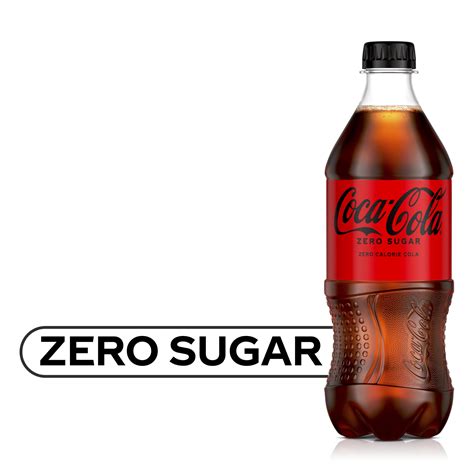Coca-Cola Zero Sugar TV commercial - Astronaut
Advertisers
Advertisers of the Coca-Cola Zero Sugar TV Spot, 'Astronaut'
Coca-Cola Zero Sugar
Coca-Cola Zero Sugar, a beloved beverage from the Coca-Cola Company, is a sugar-free and zero-calorie version of the classic Coca-Cola drink. Launched in 2005, Coca-Cola Zero Sugar quickly gained popu...
What the Coca-Cola Zero Sugar TV commercial - Astronaut is about.

Title: Coca-Cola Zero Sugar TV Spot: 'Astronaut'
Introduction:The Coca-Cola Zero Sugar TV Spot, titled 'Astronaut,' takes viewers on an adventurous journey through space, capturing the imagination and thirst for excitement. In this visually stunning commercial, Coca-Cola Zero Sugar is portrayed as the perfect companion to fuel even the most thrilling endeavors. Let's dive into the details of this captivating TV spot.
The Astronaut's Ambition:The commercial begins with a shot of a futuristic space station, buzzing with activity. Inside, we see a group of astronauts preparing for a daring mission to explore an unknown planet. Among them is our main protagonist, an astronaut brimming with ambition and determination.
Preparations and Tensions:As the astronauts gear up and perform final checks, a sense of excitement and anticipation fills the air. Amidst the hustle and bustle, the camera focuses on our main protagonist, revealing a hint of nervousness in their eyes. This relatable human element adds depth to the storyline, drawing viewers into the commercial's narrative.
The Power of Coca-Cola Zero Sugar:Just as the astronauts step into the launch capsule, the scene transitions to a close-up shot of a gleaming can of Coca-Cola Zero Sugar. The camera captures droplets of condensation on the can, emphasizing its chilled, refreshing appeal. This visual cue symbolizes the revitalizing qualities of Coca-Cola Zero Sugar, hinting at its ability to fuel the astronauts' adventurous journey.
Launch and Weightlessness:As the rocket takes off, viewers are transported on an exhilarating ride, experiencing the full force of the astronauts' ascent into space. The sheer power and intensity of the launch are perfectly matched by the can of Coca-Cola Zero Sugar, which remains flawless, undisturbed by the forces acting upon it.
In a scene depicting the moment of weightlessness, the can of Coca-Cola Zero Sugar effortlessly floats mid-air, showcasing its ability to defy gravity. This captivating imagery draws a parallel between the astronauts' mission and the brand's promise of delivering an unforgettable taste experience.
Astronaut's Reward:Finally, as the commercial nears its end, the camera cuts back to the astronaut, who has successfully completed their mission and is now floating effortlessly in space. With a satisfied smile, the astronaut reaches for the floating can of Coca-Cola Zero Sugar, signifying the triumphant enjoyment of their well-deserved reward.
Closing Message:The Coca-Cola Zero Sugar TV Spot, 'Astronaut,' effectively combines elements of science fiction and human ambition to create an
Coca-Cola Zero Sugar TV commercial - Astronaut produced for Coca-Cola Zero Sugar was first shown on television on February 21, 2018.
Song from commercial Coca-Cola Zero Sugar TV Spot, 'Astronaut'
"In the Hall of the Mountain King" is a composition by the Norwegian composer Edvard Grieg. It was written in 1875 as part of the incidental music for Henrik Ibsen's play "Peer Gynt." The piece is often performed as a standalone orchestral work and has become one of Grieg's most popular and recognizable compositions.
Composition and Style: "In the Hall of the Mountain King" is a lively and dramatic piece of orchestral music. It is part of the fourth movement of Grieg's "Peer Gynt Suite No. 1," which consists of four movements that were later extracted from the original incidental music.
The composition represents a scene from the play where the main character, Peer Gynt, finds himself in the underground hall of the mountain king. The music captures the tension and excitement of the scene as Peer Gynt tries to escape from the clutches of the trolls.
Grieg's composition draws on Norwegian folk tunes and incorporates elements of Romanticism, a musical style popular in the 19th century. The piece features a repetitive and escalating melodic line, building intensity as it progresses. The use of percussion and brass instruments adds to the dramatic effect.
Popularity and Influence: "In the Hall of the Mountain King" has gained widespread popularity and has been featured in various forms of media, including films, television shows, and commercials. Its driving rhythm and catchy melody make it instantly recognizable to many listeners.
The composition's intense and suspenseful nature has made it a favorite for use in dramatic or climactic scenes in movies and other forms of entertainment. It has been used in films such as "The Social Network" and "The Girl with the Dragon Tattoo," as well as in commercials and video games.
The enduring popularity of "In the Hall of the Mountain King" speaks to Grieg's skill as a composer and his ability to create music that resonates with audiences across different generations.
Conclusion: "In the Hall of the Mountain King" is a captivating and dramatic composition by Edvard Grieg. It was originally written as part of the incidental music for Henrik Ibsen's play "Peer Gynt" but has since become a standalone piece frequently performed by orchestras worldwide. Its lively melody, intense rhythm, and use of Norwegian folk influences have made it a beloved and recognizable work in the classical music repertoire.
Frequently Asked Questions about coca-cola zero sugar tv spot, 'astronaut'
Videos
Watch Coca-Cola Zero Sugar TV Commercial, 'Astronaut'
We analyzed TV commercials placed on popular platforms and found the most relevant videos for you:
Products
Products Advertised
TV commercials
Similar commercials













